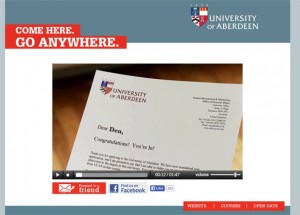It’s an “Aha!” moment at WSJ’s Career Journal, with a recent story titled Beyond Job Boards: Targeting the Source. To quote the lead:
For many Americans looking for work, the first stop is an online job board. Now job seekers are finding that prospective employers increasingly are looking elsewhere to find new hires-the companies’ own Web sites.
The story ambles on through the following points:
- Companies are buffing up their Career pages, adding videos, employee profiles and social networking tools.
- They are doing this to save money, reduce the number of applications, and improve the quality of applicants.
- Job seekers should change their tactics to match, using multiple job search tools, networking with companies and other job seekers, and researching the companies they apply to.
- Both company sites and job boards are seeing an increase in applicants of as much as 30%.
- Companies are focusing more on building their employer brands.
- Companies are turning to employee referrals and social media tools to increase and improve the applicant pool.
If all this sounds familiar . . .
In part, I’m surprised that WSJ (or at least this columnist) is so late in noting “trends” that have been widely discussed for many months. And in part, I’m surprised at the simple view provided by the story, which mentions an assortment of phenomena without exploring their situational context. The account relies mainly on general observations (for example: “‘Part of it is letting people know who we are as a company,'” says Melissa Rutledge, an employment-branding manager at Intuit.”) and anecdotal references to a few companies that are leaders in the online recruiting space (Sodexo, Adobe, Intuit, Zappos).
In fairness, the story is obviously intended as an overview, not an in-depth study, and it does offer a convenient summary of the Recruiting 2.0 landscape. Nothing mentioned is actually wrong or misleading (except perhaps describing Zappos as a “shoe retailer”). But the article raised two questions in my mind.
1. If this is “old news” . . . what’s the new news?
2. Where is the intersection between company interests and job-seeker interests?
I’ll come back to the first question in a follow-up post. As for the second, here’s what I mean: Job-seekers want jobs and companies need employees. Yet the process of getting them together seems to be more of a frustration-fest than a journey toward mutual satisfaction. There’s actually a whole industry devoted to making employment connections, yet no one on either side is happy! Job-seekers mistrust companies and complain about recruiting processes, while companies mistrust the recruiting process and complain about the large number and low quality of applicants.
I’m not sure if it was always this way, but if not, I wonder how it got this way.
So my closing thought is: Could “social networking” become more than just another process tool? Perhaps an increased emphasis on communication will produce greater understanding and cooperation between seekers and hirers–which could only be a good thing. (And maybe that will be the shape of Recruiting 3.0?)
Cynthia Giles has followed a serpentine career path from academia to publishing to marketing and design to information technology and corporate communications. There’s plenty of detail about this journey at www.cynthiagiles.com, but briefly--the common theme has been ideas, and how to present them effectively. Along the way, she became an accidental expert on data warehousing and business intelligence, and for the past ten years she has combined corporate contracting with an independent consulting practice that focuses on marketing strategy for smaller businesses and non-profits.
Having spent quite a bit of time looking for work, and anywhere from two weeks to two years inside a wide variety of American companies—she has given much thought to what works (and what doesn’t) when it comes to creating a great employment fit.


